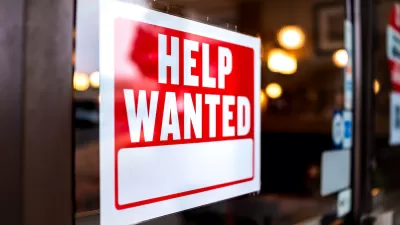For some STEM-intensive firms, the cost of living in Silicon Valley is a deal-breaker.
For STEM employees, it's no longer necessary to move to expensive cities like San Francisco and Boston. While these cities are still centers of industry and innovation, tech, biotech, and engineering clusters are sprouting up all over the country. Places like Huntsville, Alabama, which now ranks third in terms of STEM jobs as a share of the local workforce, are pulling talent away from places like San Jose, CA and Framingham, MA, ranked first and second, respectively.
Why? Why not. Despite the high rate of unemployment and low educational attainment in the wider population, Huntsville's legacy of government-funded research has supported a permanent contingent of NASA and other defense and aerospace firms. With them come the region's best and brightest STEM workers. These unusual outposts create a virtuous cycle: "Those companies pay good salaries that end up supporting public schools, restaurants, and a symphony orchestra—amenities that in turn make the city an appealing place to people like Myers [a Silicon Valley expat] and the high-skilled workers he employs," write Christopher Cannon, Patrick Clark, Jeremy Scott Diamond, and Laurie Meisler,
Bloomberg's neat infographic shows that in San Francisco and New York, average salaries for STEM workers do not outrank the costs of living. In San Jose and Boston, high average salaries make those locations barely affordable. However, in places like Houston, Charlotte, and Memphis (all mid-size Southern cities), the STEM worker's dollar goes a lot further. Houston ranks 16 in terms of STEM pay, with median pay at $88,000, but the cost of living index is 93.9. By comparison, San Jose STEM worker median pay is $120,000, and the cost of living index is 221.3. That's 36% higher pay, and 136% higher cost of living.
The Bloomberg team suggests that these pioneering techies are altering the landscape of their new unlikely homes to attract creative class millennials. “Competition for STEM workers has led Huntsville’s business community to the gospel of tactical urbanism, with its food trucks and craft beer. Downtown developers have been turning old cotton mills into artist colonies and loft apartments, and sponsoring events like a human foosball tournament and a thousand foot-long water slide.”
FULL STORY: The Unlikely Cities That Will Power the U.S. Economy

Planetizen Federal Action Tracker
A weekly monitor of how Trump’s orders and actions are impacting planners and planning in America.

San Francisco's School District Spent $105M To Build Affordable Housing for Teachers — And That's Just the Beginning
SFUSD joins a growing list of school districts using their land holdings to address housing affordability challenges faced by their own employees.

The Tiny, Adorable $7,000 Car Turning Japan Onto EVs
The single seat Mibot charges from a regular plug as quickly as an iPad, and is about half the price of an average EV.

As Trump Phases Out FEMA, Is It Time to Flee the Floodplains?
With less federal funding available for disaster relief efforts, the need to relocate at-risk communities is more urgent than ever.

With Protected Lanes, 460% More People Commute by Bike
For those needing more ammo, more data proving what we already knew is here.

In More Metros Than You’d Think, Suburbs are Now More Expensive Than the City
If you're moving to the burbs to save on square footage, data shows you should think again.
Urban Design for Planners 1: Software Tools
This six-course series explores essential urban design concepts using open source software and equips planners with the tools they need to participate fully in the urban design process.
Planning for Universal Design
Learn the tools for implementing Universal Design in planning regulations.
Smith Gee Studio
City of Charlotte
City of Camden Redevelopment Agency
City of Astoria
Transportation Research & Education Center (TREC) at Portland State University
US High Speed Rail Association
City of Camden Redevelopment Agency
Municipality of Princeton (NJ)





























